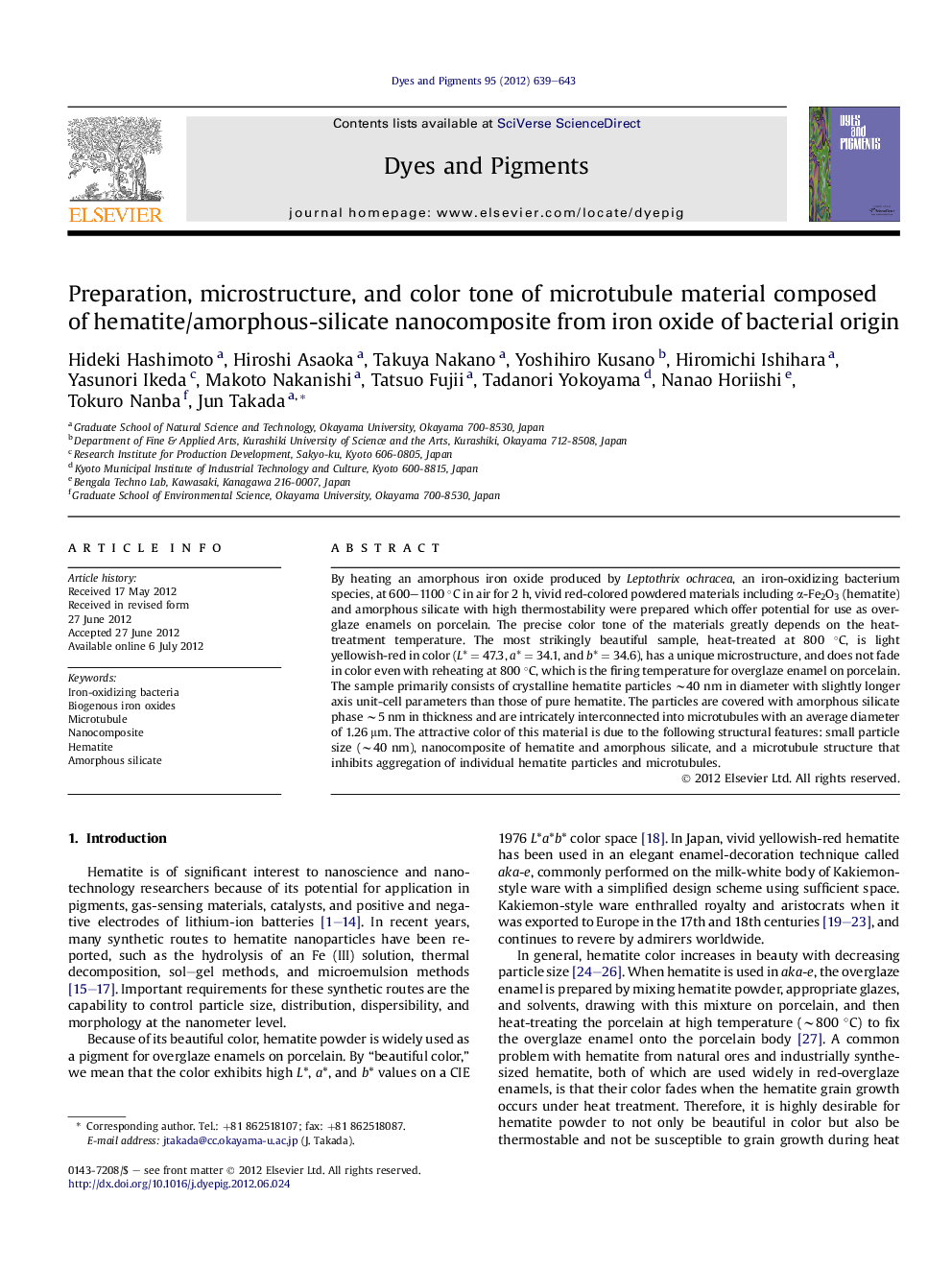| Article ID | Journal | Published Year | Pages | File Type |
|---|---|---|---|---|
| 176847 | Dyes and Pigments | 2012 | 5 Pages |
By heating an amorphous iron oxide produced by Leptothrix ochracea, an iron-oxidizing bacterium species, at 600–1100 °C in air for 2 h, vivid red-colored powdered materials including α-Fe2O3 (hematite) and amorphous silicate with high thermostability were prepared which offer potential for use as overglaze enamels on porcelain. The precise color tone of the materials greatly depends on the heat-treatment temperature. The most strikingly beautiful sample, heat-treated at 800 °C, is light yellowish-red in color (L* = 47.3, a* = 34.1, and b* = 34.6), has a unique microstructure, and does not fade in color even with reheating at 800 °C, which is the firing temperature for overglaze enamel on porcelain. The sample primarily consists of crystalline hematite particles ∼40 nm in diameter with slightly longer axis unit-cell parameters than those of pure hematite. The particles are covered with amorphous silicate phase ∼5 nm in thickness and are intricately interconnected into microtubules with an average diameter of 1.26 μm. The attractive color of this material is due to the following structural features: small particle size (∼40 nm), nanocomposite of hematite and amorphous silicate, and a microtubule structure that inhibits aggregation of individual hematite particles and microtubules.
Graphical abstractFigure optionsDownload full-size imageDownload as PowerPoint slideHighlights► An iron oxide of bacterial origin was heat treated in air. ► The product is a vivid-yellowish-red powder with high thermostability. ► The powder is an aggregate of microtubule structures. ► The microtubule is composed of nanocomposites of α-Fe2O3/amorphous-silicate.
